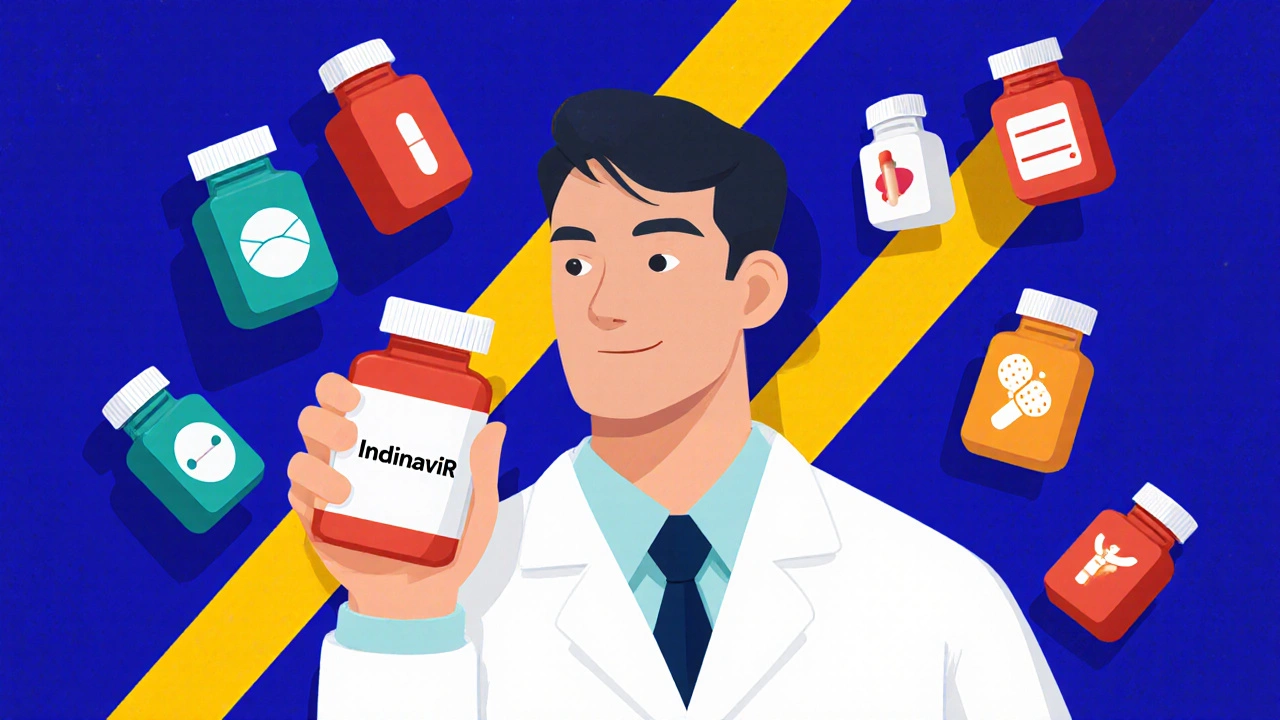HIV Protease Inhibitors: How They Work and What You Need to Know
When you hear HIV protease inhibitors, a class of antiretroviral drugs that block the HIV enzyme needed to make new virus particles. Also known as PIs, these medications are a cornerstone of modern HIV treatment, helping people live longer, healthier lives by keeping the virus under control. They don’t cure HIV, but they stop it from turning your body into a virus factory. Without them, HIV would keep copying itself, wrecking your immune system until it can’t fight off even minor infections.
These drugs work by targeting a specific enzyme called protease — the virus’s scissors. HIV needs protease to cut long chains of proteins into smaller pieces so it can build new, infectious particles. When protease inhibitors block that enzyme, the virus makes broken, useless copies. It’s like giving the virus a pair of scissors with dull blades — it can’t finish the job. This is why they’re always used in combination with other antiretrovirals, like reverse transcriptase inhibitors. Alone, they’re not enough. Together, they form what’s called antiretroviral therapy, a multi-drug approach that suppresses HIV to undetectable levels, which also stops transmission.
Not all HIV protease inhibitors are the same. Some, like ritonavir, often used as a booster to make other HIV drugs work better, aren’t strong on their own but help other drugs stay active longer. Others, like atazanavir or darunavir, are chosen for fewer side effects or once-daily dosing. People on these drugs need regular blood tests to check liver function and cholesterol — some can raise triglycerides or cause fat redistribution. And while they’re far safer than early versions, they still interact with other meds, like statins or erectile dysfunction drugs. That’s why you never start or stop them without your doctor’s guidance.
What you won’t find in every article is how these drugs changed the game. Before protease inhibitors hit the market in the mid-90s, an HIV diagnosis often meant a short life expectancy. Today, with proper treatment, someone with HIV can expect to live as long as someone without it. That’s not magic — it’s science. And it’s why research into next-gen protease inhibitors continues, aiming for even fewer pills, fewer side effects, and better resistance profiles.
You’ll see posts here comparing HIV drugs, explaining side effects, and breaking down how treatment regimens are built. Some talk about switching meds, others about managing long-term health while on these drugs. There’s no fluff — just real talk about what works, what doesn’t, and what to watch for if you or someone you know is taking these medications. Whether you’re newly diagnosed, helping a loved one, or just trying to understand how modern HIV care works, this collection gives you the facts without the jargon.
Indinavir vs. Other HIV Protease Inhibitors: Detailed Comparison of Alternatives
A thorough side‑by‑side look at Indinavir and its main alternatives, covering dosing, side effects, resistance and when to switch.
